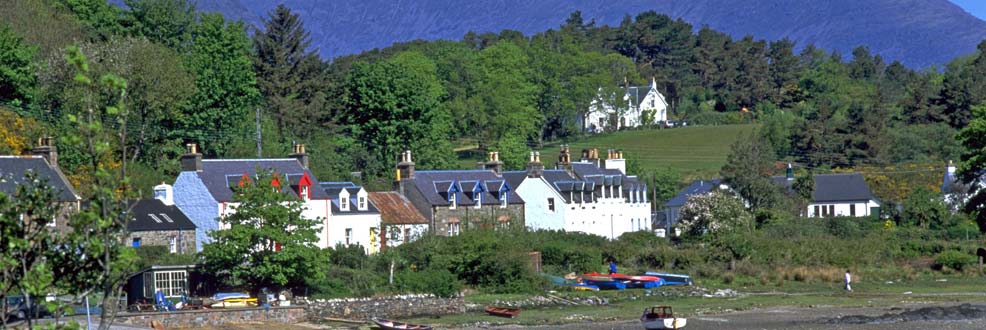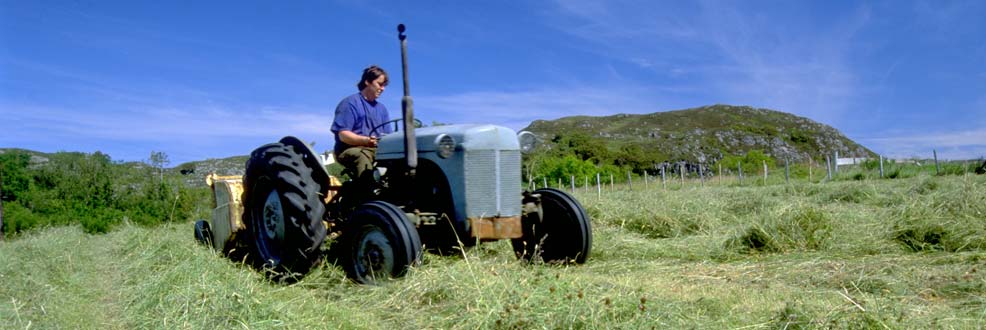Fodder Production and Grasslands
Essential Guide to Forage Crops by Limagrain UK Ltd, covering topics such as: crop rotations, choosing the right forage crop, maize, beet, kale, stubble turnips, swedes, forage peas, lucerne, crop comparisons and feeding guidelines.
Forage Root Crops Selector from Harlow Agricultural Merchants.
'Forage crops reducing winter feed bill' - an article by an Aberdeenshire farmer about how he feeds his sheep through the winter with a mixture of swede and kale. From QMS.
Another article from QMS about a farm on Mull which uses a mixture of stubble turnips and forage rape as winter feed for sheep - 'Forage crops and regional marketing scheme bring success to Mull Monitor Farm'.
'Using brassicas for Better Returns' - a comprehensive manual detailing all aspects of growing brassicas for cattle and sheep forage. 'Brassica crops such as kale, forage rape, grazing turnips, stubble turnips, swedes and new rape/kale hybrids, can provide nutritious, cost-effective feeds for beef cattle and sheep.' Agriculture and Horticulture Development Board copyright (with input from SAC), the text of this document (this excludes, where present, any logos) may be reproduced free of charge in any format or medium providing that it is reproduced accurately and not in a misleading context.
Frank Fraser Darling addresses the growing of root crops for cattle fodder in chapter 6 of his Crofting Agriculture, Edinburgh 1945, Planning for the Spring Work.
An interesting piece from SRUC on ‘Calculating the expected forage requirement over winter’, for cattle and sheep.
From Quality Meat Scotland, ‘Better Soil and Grassland Management, for Scottish Beef and Lamb Producers’. This document contains an excellent section on soil types, structure and problems (eg. compaction and poaching), common weeds, reseeding, improving long term grazing, grassland management in the hills and uplands, improving grass utilisation, grazing systems, rotational grazing, silage production and forage crop options.
A description of a ‘typical’ croft in South Uist with some information about the management of ‘in bye’ pasture land.
A brief article by Anne MacLellan, from the Development Department of Comhairle nan Eilean Siar (now a full-time crofter) about ‘Crofting and biodiversity on the Machair of the Western Isles’, giving an insight into rotational and seasonal grazing and the use of landrace cereal crops for winterfeed:
Frank Fraser Darling wrote a fascinating chapter on ’The Conservation of Winter Fodder’, in his book ‘Crofting Agriculture', Edinburgh 1945, in which his comments about hay making in the West still ring true today. His chapter on ‘The Management of Grass’ is highly detailed and again, has relevance today.
The Accidental Smallholder, a website set up by a smallholder in the east of Scotland, has an informative section about Grassland management which contains sections on: Grassland Terms and Definitions, Biology of Grass, Plants in Grassland, Caring for Grassland and How Many Animals will my Grassland Support?
The principles of pasture management: harrowing, rolling, topping, weed-control, soil fertility and seeding, from the Smallholder Series.
Rush management advice from the RSPB, with an emphasis on wader conservation.
Guidance for cutting of rush pasture by the Scottish Government (9 January 2017) - Rural Payments and Services.
'Grassland Management for Organic Farmers' by David Younie (Crowood Press, 2012) - 'This invaluable and comprehensive book is a practical manual on all aspects of organic grassland management and presents down-to-earth advice backed up by scientific explanation. It is aimed primarily at organic farmers, agricultural students and organic advisors and consultants. However, it will also be useful to the ever increasing number of non-organic farmers wishing to move towards a low carbon, clover-based grassland system. The author discusses making the most of clover and soil nitrogen mineralization, the role of herbs and the efficient recycling of manures. He also covers reducing weed invasion, clean grazing systems for worm control, efficient grazing and conversation, and minimizing the environmental impact of grassland' (from British Grassland Society).
Management of Species-Rich Grassland
Managing wildflower pastures ...for bumblebees from the Bumblebee Conservation Trust.
Managing species-rich hay meadows for wildlife by the Yorkshire Dales National Park Authority.
Maintaining flower-rich hay meadows – advice for farmers from the RSPB.
The Management of Unimproved Lowland Grassland for Nature Conservation by SNH.
Conservation and restoration of species-rich grasslands in the Elan Valley – ‘The 'Elan Valley Meadows project' was set up to address both the management of the existing species-rich grasslands and their potential expansion, as well as some small-scale supporting studies’.
‘Managing Upland Habitats with Differing Grazing Requirements’ - A Practical Guide by SAC. ‘This Guide provides practical information for land managers who are undertaking upland habitat management particularly on designated sites, although the principles are applicable more widely.’
‘Management Guidelines for Grassland in Environmental Schemes’ – prepared by ADAS. These guidelines are specifically for farms involved in agri-environmental schemes, however there may be useful advice for those seeking to manage grassland for wildlife and there are sections on acid grassland as well as marshy grassland.
‘Supporting guidance for Species-rich Grassland Management’ (December 2015) from the Rural Payments section of the Scottish Government. ‘Species-rich grasslands are valuable wildlife habitats and are found throughout Scotland. They have declined dramatically in recent decades and now occupy just two per cent of Scotland's farmland grassland. They are vulnerable to damage by agricultural improvements, particularly fertilisation, which encourages the growth of a few vigorous grasses at the expense of the great variety of smaller, slower-growing plants.’
Grassland Handbook by SNH. ‘This booklet tells the story of how ancient man first created the grasslands from forest clearings. It explains how different farming practices lead to different types of grassland and how the soil determines the plants and animals which can grow and feed there. It contrasts the uniformity of intensively managed silage fields with the diversity of traditionally managed pasture and meadow.’
Grassland Management Guide by SNH. ‘This illustrated guide has been designed to help show you what wildlife needs in terms of grassland structure and condition.’
‘Conservation Grazing of Semi-natural Habitats’ a download from SRUC. ‘Appropriate grazing is essential to maintain many important habitats in Scotland……’
‘Management of Species Rich Grassslands’ a download from SRUC. ‘Species-rich grasslands support a wide range of wildflowers, many of which are becoming uncommon in the Scottish countryside. Species-rich grasslands are often under-valued, as it is not immediately obvious that they are an extremely important wildlife habitat.’
‘Lowland Grassland Handbook’ (second edition, April 2007’) by Natural England. ‘The handbook covers topics such as grazing, mowing, scrub management, grassland creation, weed control and management for specific species assemblages.’
‘The Upland Management Handbook’ (February 2001) by Natural England. ‘The upland management handbook pools the expertise of many of the country’s leading wildlife, farming and land management specialists to provide a blueprint for the practical delivery of the land management that will benefit upland wildlife. It is written for people who advise farmers and other land managers in upland areas about the best management for wildlife and other natural features.’











